Keep your home fresh, clean, and thriving with our blog! We share expert tips, clever tricks, and practical advice to maintain a healthy living space. From air quality improvements to natural cleaning solutions, we’ve got everything you need to make your home a sanctuary of wellness. Stay tuned for the latest insights!
Arizona summers are no joke!
AND your HVAC system needs to be in top shape to handle the heat! Here are some essential tips to keep your home cool and your system running efficiently:
-
Change air filters regularly – Dust and debris build up quickly, especially in Arizona’s dry climate. Swap out filters every 1–3 months to maintain airflow and efficiency.
-
Schedule professional maintenance – A technician can check refrigerant levels, clean coils, and ensure your system is operating at peak performance.
-
Seal air leaks – Inspect windows and doors for gaps that let cool air escape. Proper insulation can significantly reduce energy costs.
-
Clean the outdoor unit – Remove any debris, leaves, or dirt around the condenser to prevent overheating.
-
Use ceiling fans strategically – Fans help circulate cool air, allowing you to set your thermostat a few degrees higher without sacrificing comfort.
-
Optimize thermostat settings – Set your thermostat to 78°F when home and 85°F when away to balance comfort and efficiency.
-
Check ductwork for leaks – Leaky ducts can waste cooled air and force your system to work harder.
Want to go the extra mile? Consider installing a smart thermostat for better temperature control and energy savings.

Stay Cool This Summer with a Discounted HVAC Installation!
Summer’s coming fast, and temperatures are on the rise! Don’t wait until the heat wave hits—upgrade your home’s cooling system NOW at an unbeatable price.
🌟 Limited-Time Offer: Exclusive discounts on HVAC installations! ❄ Energy-Efficient Systems: Lower your cooling costs while staying comfortable. 💨 Fast & Professional Service: Beat the rush and get ahead of summer!
📞 Call AC and Plumbing Pro today and schedule your installation before prices go up! 480.865.5163
👉 Don’t sweat it—get cool, save money, and enjoy the summer stress-free
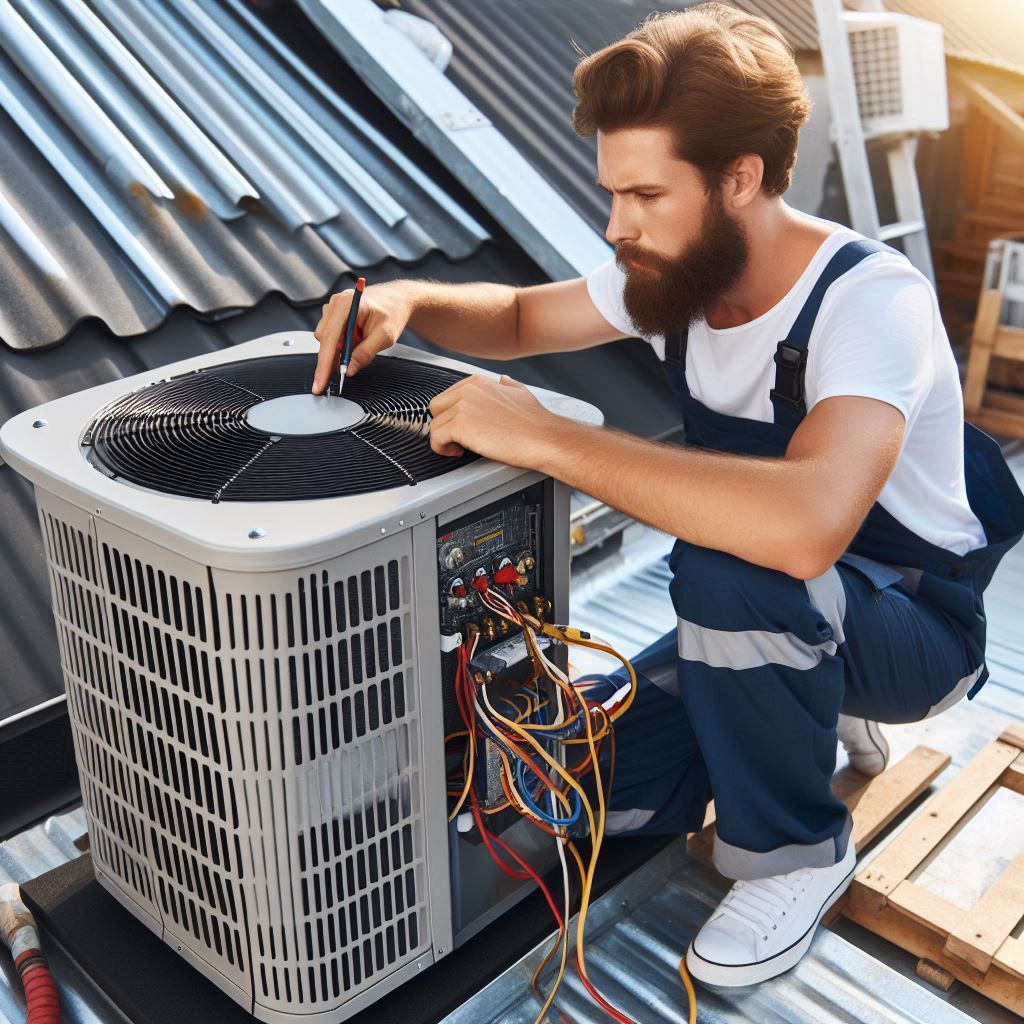
Maintaining your water heater year-round so it lasts longer:
Maintaining your water heater year-round ensures it runs efficiently and lasts longer. Here are some key tips:
- Flush the Tank: Sediment can build up over time, reducing efficiency. Drain and flush the tank at least once a year to remove sediment.
- Check the Anode Rod: This rod prevents rust inside the tank. Inspect it annually and replace it if it’s heavily corroded.
- Test the Pressure Relief Valve: This safety feature prevents excessive pressure buildup. Open the valve to ensure water flows out and stops when closed.
- Inspect for Leaks: Regularly check for water pooling around the heater or rust on the tank.
- Adjust the Temperature: Set the thermostat to 120°F to prevent scalding and save energy.
- Insulate the Tank and Pipes: This helps retain heat and reduces energy costs, especially in colder months.
- Clean the Air Intake and Venting System (for gas heaters): Ensure proper airflow to prevent backdrafting.
- Schedule Professional Maintenance: Once a year, have a technician inspect and service your water heater.

Signs You need Sewer Line Repair
- Persistent Drain Backups: If your sinks, showers, or toilets are constantly backing up, it could signal a blockage deep within your sewer line.
- Slow Drainage: Water taking longer to drain in multiple fixtures might point to a significant issue in your sewer system.
- Unpleasant Odors: A distinct sewage smell around your home is often a sign of a damaged sewer line.
- Soggy Yard: Wet patches in your yard could indicate a leak in the sewer line.
- Gurgling Sounds: Constant gurgling noises from your pipes might mean there’s a blockage or damage.
- Spike in Water Bills: An unexplained increase in your water bill could be due to a leak in the sewer line.
If you’re noticing any of these signs, it might be time to call a professional plumber to assess the situation. Have you observed any of these issues recently? AC and Plumbing Pro can help!
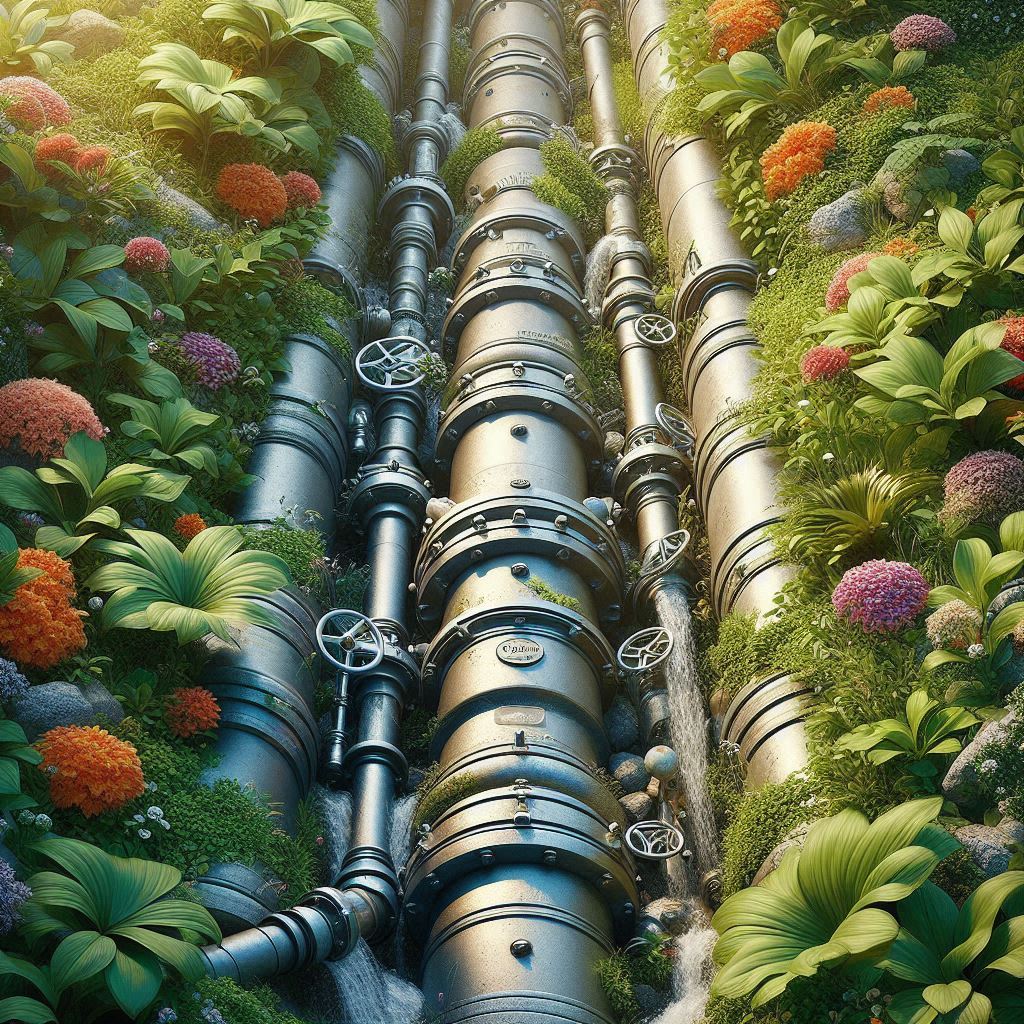
How to Avoid Clogged Drains
Spring cleaning isn’t just for closets and garages—your drains need some love too! Here are practical tips to keep them flowing smoothly:
- Use Drain Screens: Place mesh screens over your drains to catch hair, food scraps, and other debris before they sneak into your pipes.
- Mind the Kitchen Sink: Avoid pouring grease, oil, or coffee grounds down the drain; they tend to build up and create clogs. Dispose of them in the trash instead.
- Flush with Hot Water: After using your sink, pour hot water down the drain to dissolve any lingering soap scum or oils.
- Opt for Monthly Maintenance: Once a month, sprinkle some baking soda followed by white vinegar down your drain. Let it fizz for a few minutes, then flush with hot water—it’s like a spa treatment for your pipes!
- Be Careful with Plants and Dirt: If you’re gardening this spring, avoid washing soil-covered hands or tools in your sink—it can lead to blockages.
- Inspect and Clear Gutters: Ensure your outdoor drains and gutters are free from leaves and debris, which can cause water backup during spring showers.
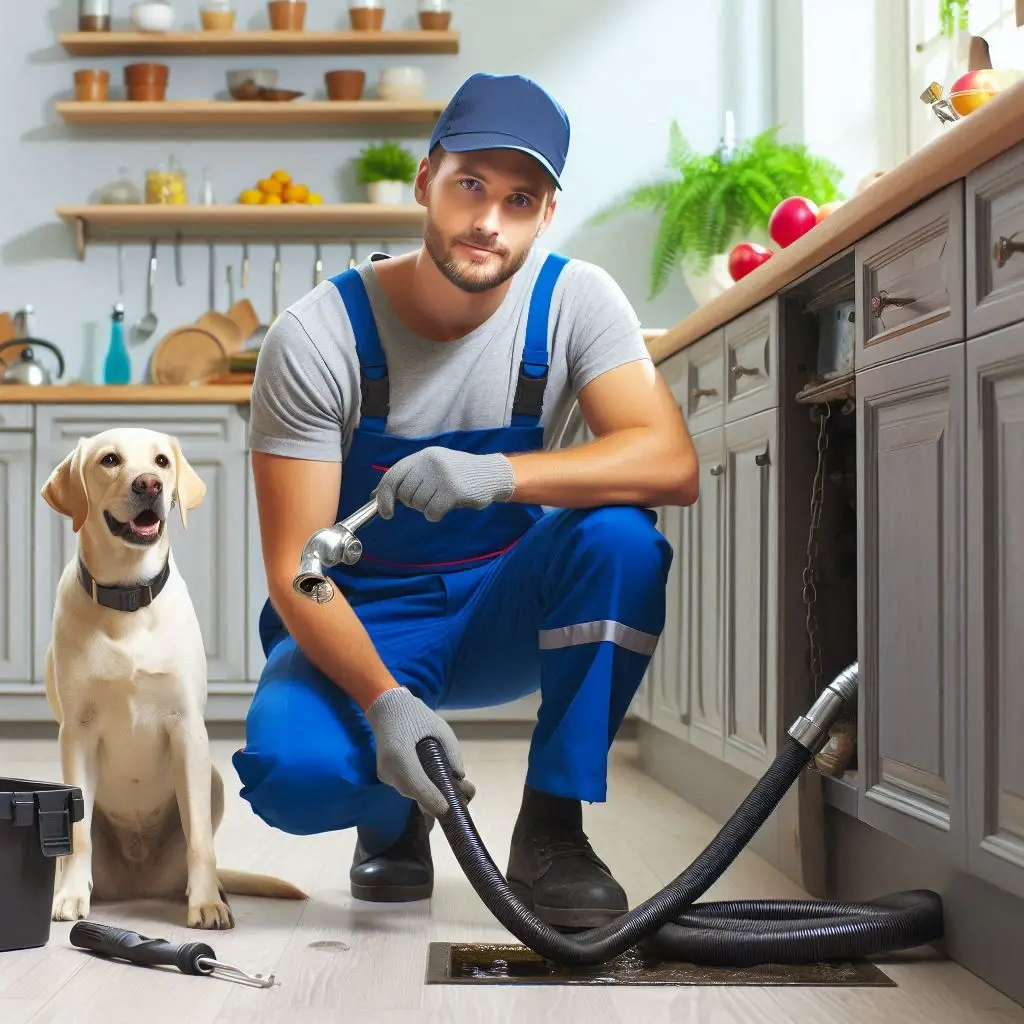
The Benefits of Tankless Water Heaters
Tankless water heaters offer several advantages that make them a popular choice for many homeowners and businesses. Here are some key benefits:
- Energy Efficiency: Unlike traditional water heaters that constantly heat water in a tank, tankless models heat water only on demand. This reduces energy consumption and can lead to lower utility bills.
- Space-Saving Design: Tankless water heaters are compact and wall-mounted, freeing up valuable space in your home.
- Unlimited Hot Water: Since they heat water as needed, you won’t run out of hot water—even during long showers or when multiple appliances are in use.
- Longer Lifespan: Tankless units tend to last longer than traditional water heaters, often providing reliable service for up to 20 years or more with proper maintenance.
- Environmentally Friendly: With reduced energy use and longer lifespans, tankless water heaters have a smaller carbon footprint compared to conventional models.
- Improved Water Quality: Without a storage tank, there’s less risk of sediment build-up that can affect water quality.
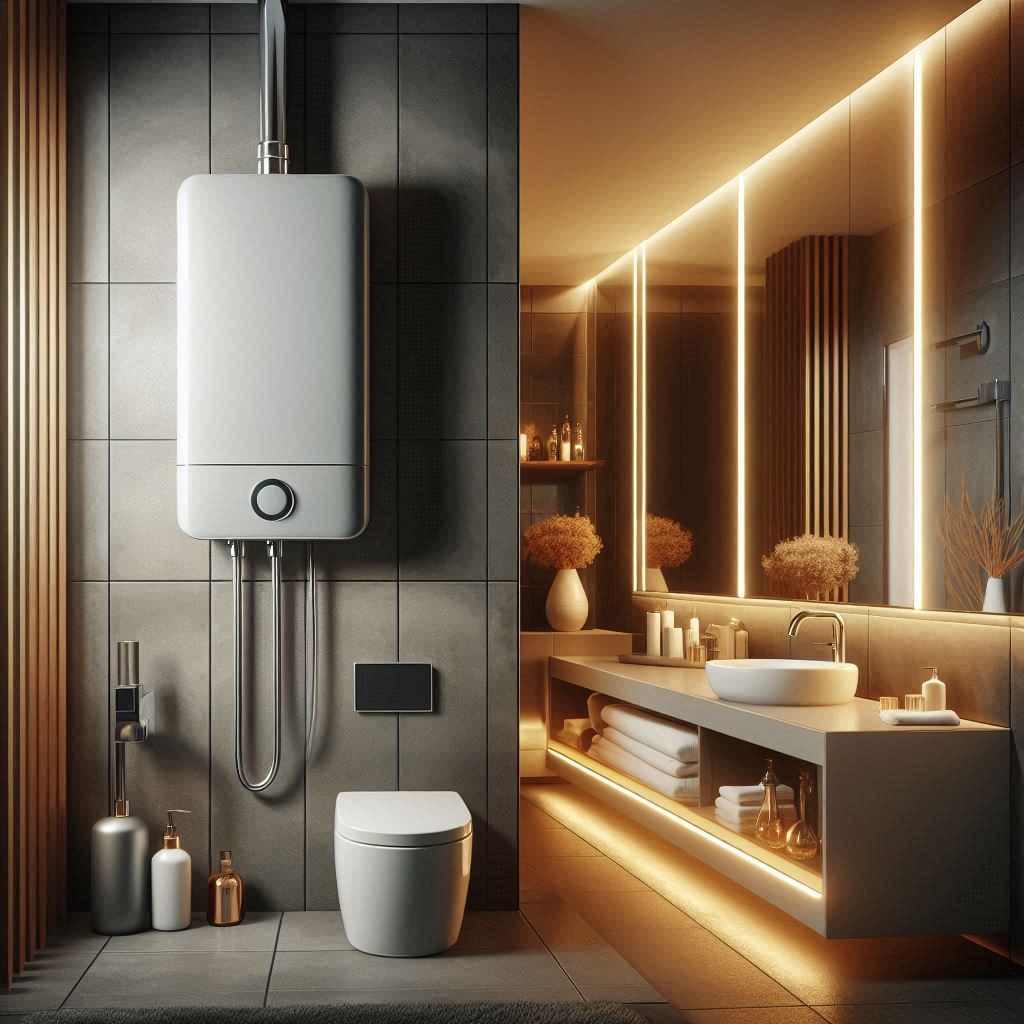
Preparing Your Plumbing for the Summer Heat
Getting your plumbing ready for summer heat is a smart move to prevent potential issues caused by high temperatures and increased water usage. Here’s a checklist to help ensure your plumbing stays in top shape during the warmer months:
Preparation Tips:
- Inspect for Leaks: Check pipes, faucets, and outdoor hose connections for any leaks. Even small leaks can worsen during summer due to thermal expansion.
- Service Your Water Heater: During summer, you might lower the temperature setting to save energy. Additionally, flush your water heater to remove sediment buildup that reduces efficiency.
- Outdoor Plumbing Checks: Inspect garden hoses, sprinklers, and irrigation systems for wear and tear. Replace damaged parts and clean clogged nozzles.
- Check Sewer Lines: Hot weather can exacerbate sewer line issues. Look for slow drains or bad odors as signs of potential problems, and schedule professional maintenance if needed.
- Install a Pressure Regulator: If you anticipate heavy water usage, a pressure regulator can help maintain consistent flow and prevent pipe damage.
- Protect Exposed Pipes: Outdoor or exposed pipes might expand and contract due to heat. Wrap them with insulation to minimize the stress.
- Maintain Pool Plumbing (if applicable): Inspect your pool’s pump, filters, and pipes to ensure they’re functioning efficiently during peak use.
- Test Your Sprinkler System: Run your sprinklers to make sure all zones are functioning properly and water is distributing evenly.
Bonus Tips for Saving Water:
- Repair dripping taps or running toilets.
- Water lawns and gardens early in the morning to avoid evaporation.
- Consider adding water-saving fixtures like low-flow faucets or toilets.
Preparing now can save you both water and repair costs later in the season. Do you have specific plumbing concerns you’d like advice on? Let us know!

General HVAC Tips for Arizona's Climate
🌞 General HVAC Tips for Arizona’s Climate
- Schedule Seasonal Maintenance
- Book professional HVAC maintenance twice a year — spring (pre-summer) and fall (pre-winter) — to ensure system efficiency.
- Install a Programmable Thermostat
- Use smart or programmable thermostats to optimize cooling schedules and reduce energy bills.
- Replace Air Filters Frequently
- Arizona’s dusty environment clogs filters faster. Check filters monthly and replace every 1–2 months, or more often during monsoon season.
- Seal Ductwork
- Leaky ducts can waste 20–30% of conditioned air. Use a mastic sealant or metal tape (not duct tape) to seal joints and leaks.
- Use Ceiling Fans Wisely
- Supplement your HVAC system by running ceiling fans counterclockwise in summer to push cool air down.
❄️ Cooling-Specific Tips
- Inspect and Clean Outdoor AC Units
- Keep condenser units clear of debris, plants, and dust. Hose off coils gently to improve airflow.
- Install Shade or Cover for Condenser
- Use an awning or lattice structure to shade outdoor units without blocking airflow to boost efficiency.
- Upgrade to a High-SEER Unit
- SEER (Seasonal Energy Efficiency Ratio) matters in Arizona. Look for at least 16 SEER or higher for better energy performance.
- Add Insulation to Attics and Ducts
- Poorly insulated attics can lead to heat infiltration. Consider radiant barriers and R-30 or higher insulation.
- Avoid Short-Cycling
- Oversized systems can cool too fast and shut off prematurely. Get proper load calculations before installing a new unit.
Arizona HVAC Pro Tips Checklist
☀️ Summer Prep
- ✅ Schedule a professional AC tune-up before May.
- ✅ Replace or clean air filters monthly—dust builds up fast in the desert.
- ✅ Clear debris from around the outdoor condenser unit.
- ✅ Check refrigerant levels to ensure optimal cooling.
- ✅ Inspect ductwork for leaks—especially in attics.
🍂 Fall & Winter Readiness
- ✅ Reverse ceiling fans to clockwise for better heat circulation.
- ✅ Test your heating system before the first cold snap.
- ✅ Insulate exposed pipes and ducts to prevent heat loss.
- ✅ Replace filters again—yes, even in winter!
🛠️ Year-Round Efficiency
- ✅ Install a programmable or smart thermostat.
- ✅ Seal windows and doors to keep cool air in.
- ✅ Keep blinds closed during peak sun hours.
- ✅ Consider upgrading to a high-efficiency HVAC system if yours is over 10 years old.
🌬️ Bonus Pro Tip
- ✅ Use ceiling fans to supplement your HVAC—set them counterclockwise in summer for a wind-chill effect
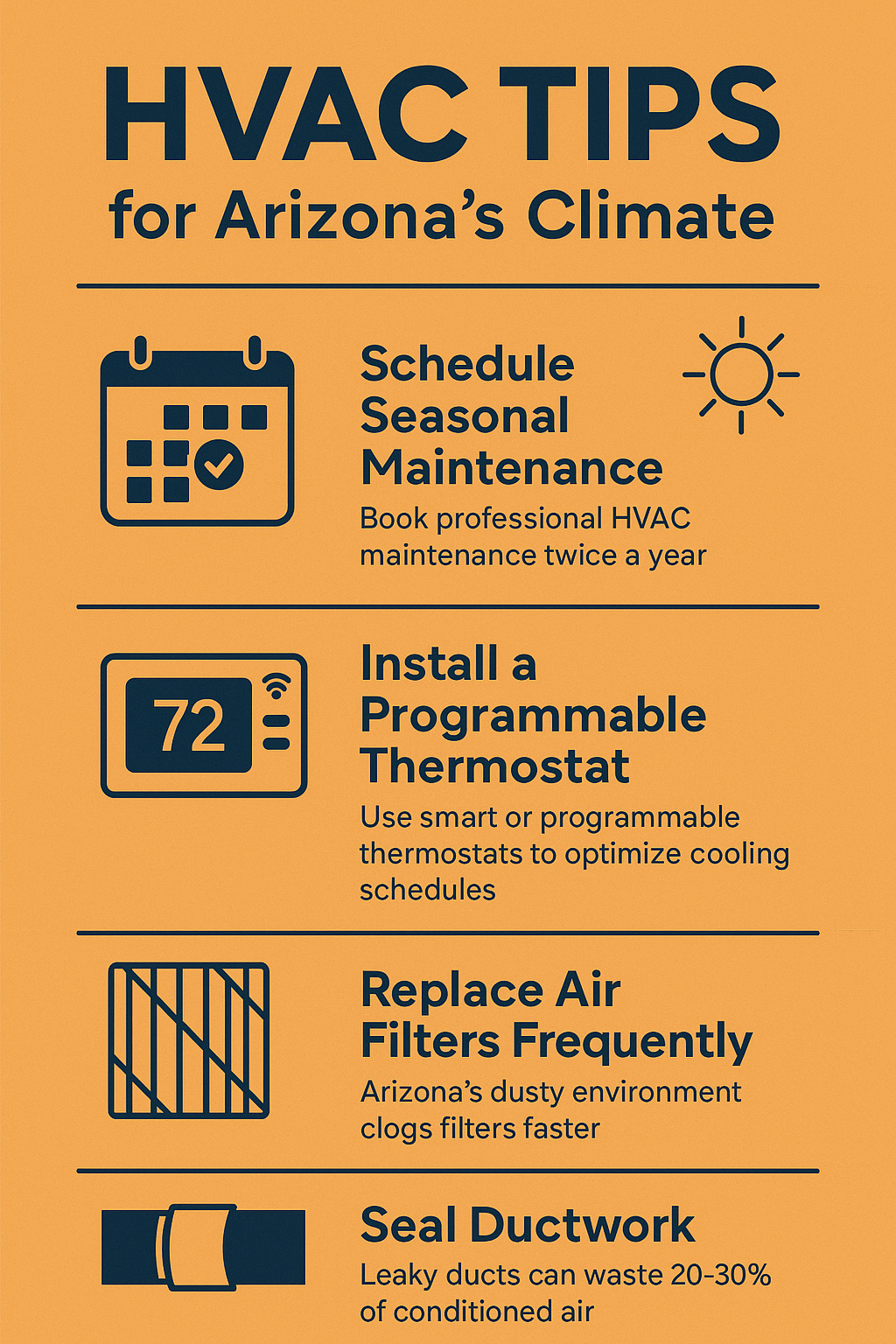

Hi, this is a comment.
To get started with moderating, editing, and deleting comments, please visit the Comments screen in the dashboard.
Commenter avatars come from Gravatar.